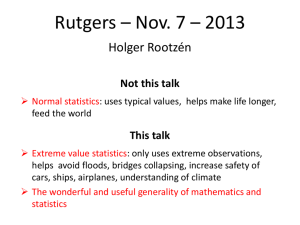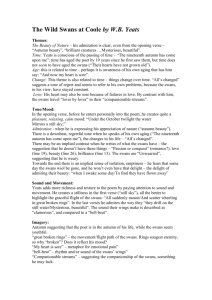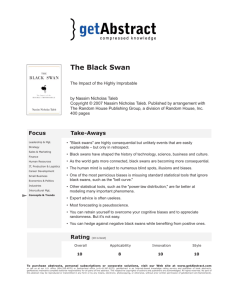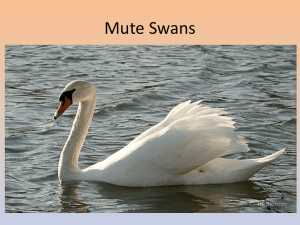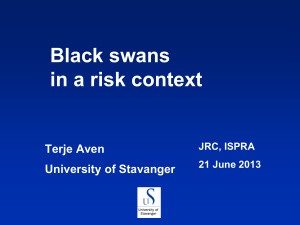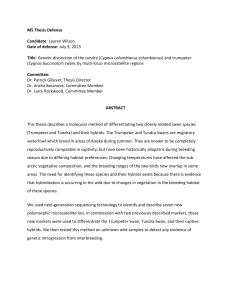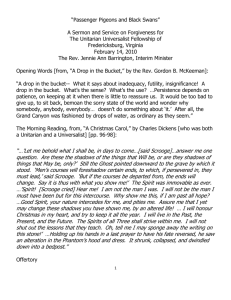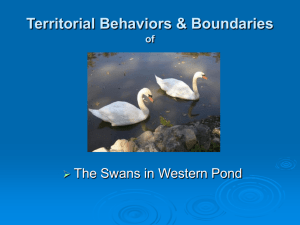Scenic wildlife or stately pest
advertisement
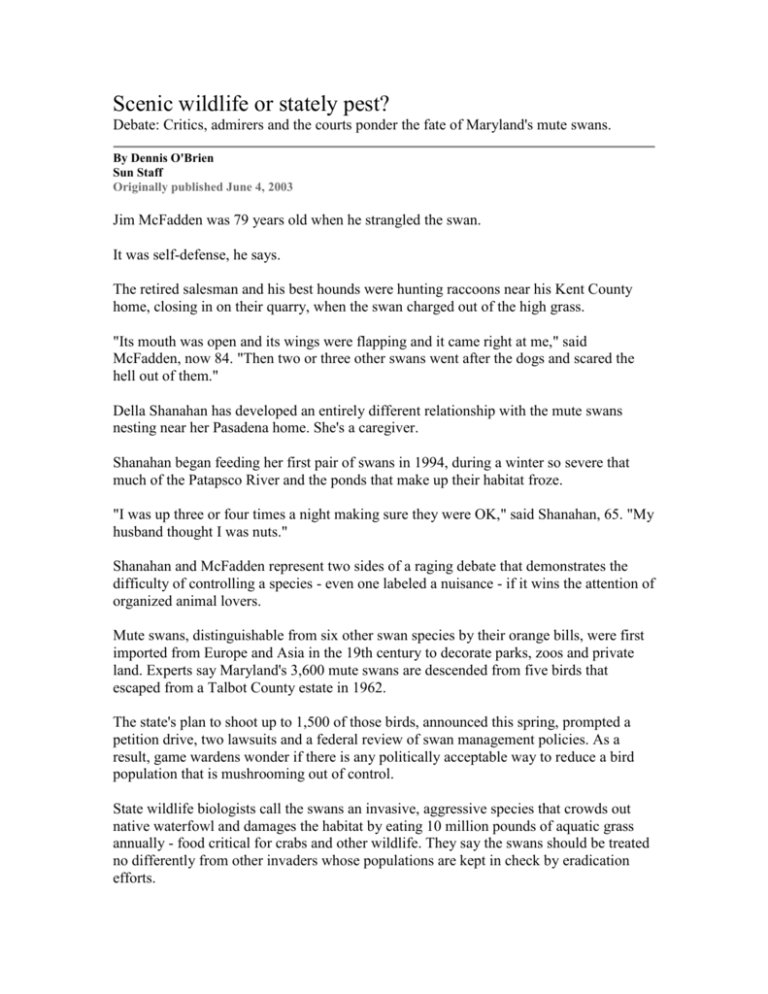
Scenic wildlife or stately pest? Debate: Critics, admirers and the courts ponder the fate of Maryland's mute swans. By Dennis O'Brien Sun Staff Originally published June 4, 2003 Jim McFadden was 79 years old when he strangled the swan. It was self-defense, he says. The retired salesman and his best hounds were hunting raccoons near his Kent County home, closing in on their quarry, when the swan charged out of the high grass. "Its mouth was open and its wings were flapping and it came right at me," said McFadden, now 84. "Then two or three other swans went after the dogs and scared the hell out of them." Della Shanahan has developed an entirely different relationship with the mute swans nesting near her Pasadena home. She's a caregiver. Shanahan began feeding her first pair of swans in 1994, during a winter so severe that much of the Patapsco River and the ponds that make up their habitat froze. "I was up three or four times a night making sure they were OK," said Shanahan, 65. "My husband thought I was nuts." Shanahan and McFadden represent two sides of a raging debate that demonstrates the difficulty of controlling a species - even one labeled a nuisance - if it wins the attention of organized animal lovers. Mute swans, distinguishable from six other swan species by their orange bills, were first imported from Europe and Asia in the 19th century to decorate parks, zoos and private land. Experts say Maryland's 3,600 mute swans are descended from five birds that escaped from a Talbot County estate in 1962. The state's plan to shoot up to 1,500 of those birds, announced this spring, prompted a petition drive, two lawsuits and a federal review of swan management policies. As a result, game wardens wonder if there is any politically acceptable way to reduce a bird population that is mushrooming out of control. State wildlife biologists call the swans an invasive, aggressive species that crowds out native waterfowl and damages the habitat by eating 10 million pounds of aquatic grass annually - food critical for crabs and other wildlife. They say the swans should be treated no differently from other invaders whose populations are kept in check by eradication efforts. On the other side of the argument are fans of the majestic birds who say the swans are as much a part of their habitat as the people who would shoot them - and just as entitled to live their lives in peace. "If they're invasive, so are we," said Shanahan. The pro-swan campaign began in April, when the Maryland Department of Natural Resources announced its shooting plans after years of trying a less-dramatic measure, spreading food oil on the swans' eggs to keep them from hatching. Wildlife officers killed about 100 birds before the first lawsuit was filed in Washington by an animal protection group and three Eastern Shore residents. A few days later, the DNR agreed to stop the shooting and surrender its federal permit until the U.S. Fish and Wildlife Service could review its policies. Another lawsuit, filed by a Connecticut-based advocacy group, alleges that the federal agency violated environmental laws by granting blanket swan-shooting approval to Maryland and dozens of states, mostly in the Northeast and Upper Midwest. As a result of that lawsuit, Fish and Wildlife officials are reviewing those permits. One of those states was Michigan, which planned to allow hunters to shoot up to 25 mute swans on two lakes in the Ottawa Indian reservation about 300 miles north of Chicago. Mark Knee, a wildlife biologist for the Little River Band of the Ottawa Indians, complained that Michigan's mute swan population swelled to 4,000 before state officials finally decided to act. In addition to devouring aquatic grasses, he said, the swans are eating wild rice, which is becoming a cash crop. The lawsuits have put Michigan's plans on hold. "We're just in a wait-and-see attitude right now," he said. Maryland wildlife biologists say that many of the swans' defenders are swayed by the birds' beauty. No one, they noted, has protested efforts to kill off less-attractive invaders such as the nutria, a web-footed rodent that infests Eastern Shore waters, and the northern snakehead, a voracious predatory fish that infiltrated three Crofton ponds. "Thank God, the snakehead didn't have this kind of advocacy going for it or we'd be completely losing our fisheries," said Jonathan McKnight, associate director of habitat conservation for the Department of Natural Resources' Wildlife and Heritage Service. For many longtime Eastern Shore residents such as McFadden, the state's effort to reduce the swan population makes sense. Although he no longer hunts raccoons, it would certainly lessen the chance of incidents like the one four years ago, when he wound up wringing the neck of the swan that rushed him. He hasn't killed a swan since, and he said he realizes that he probably provoked that one by coming too close to its nest. Even so, he said he never much liked the birds. That much was evident last week when he took a visitor on a tour of the woods and farms in Kent County, where he has lived since 1946. "There's one of them ... now," he said, using a vulgarity and pointing to a swan rising into the air near the scene of the attack - along Wilson Point, across a placid cove from Eastern Neck National Wildlife Refuge. But for McFadden, the ninth of 14 children raised a few miles north on a Cecil County farm, it's not personal. He says shooting the birds is no different than shooting deer or ducks, or spraying herbicide on a pesky weed. It's a viewpoint shared by many hunters and farmers who have managed land and wildlife for generations. "The way I see it, man was put on this earth to have dominion over all its creatures," he said. "It says so in the Bible." But admirers say there is no proof that the swans are causing the environmental damage being pinned on them. "Where's the science behind this? Where are these scientific studies?" asked Patrick Hornberger, one of the Eastern Shore activists who filed the first lawsuit. In Pasadena, Shanahan still lugs 50-pound sacks of dried corn from a local supply store to her basement so she can feed swans, ducks and geese from the dock behind her home. Skirmishes with government environmental policies have made her skeptical, she said, among them a battle over a failed Maryland Port Authority plan to create an island in the Patapsco near her home out of spoil from harbor dredging. Shanahan lives across the river from the old Bethlehem Steel plant at Sparrows Point, which for years polluted the Chesapeake Bay. Having seen that, she doesn't believe the swans are so threatening that they must be killed. "It's hard to believe the loss of grasses is from swans. Why go after one animal like that?" she said. She keeps a camera on hand to videotape any state crews who come near her property if the shooting resumes. Friends of Animals, a national animal rights organization, has posted a $1,000 offer on its Web site for "quality" videotapes showing DNR officials killing swans. Shanahan said she hopes that someone catches an agent in the act, because it would sway public opinion and show the shooting program for what it is. "These are very defenseless creatures, and they're very easy targets," she said. Shanahan is no bird expert. But with six feeders for hummingbirds and five for other fowl that nest nearby, she has spent hours watching birds and understands a few things about them. And as a mother of four and grandmother of six, she also understands that if a swan attacks a hunter, it is probably because the bird considers him a threat to its offspring. "I could get pretty angry myself if I thought someone was going after my children," she said. Copyright © 2003, The Baltimore Sun | Get home delivery

